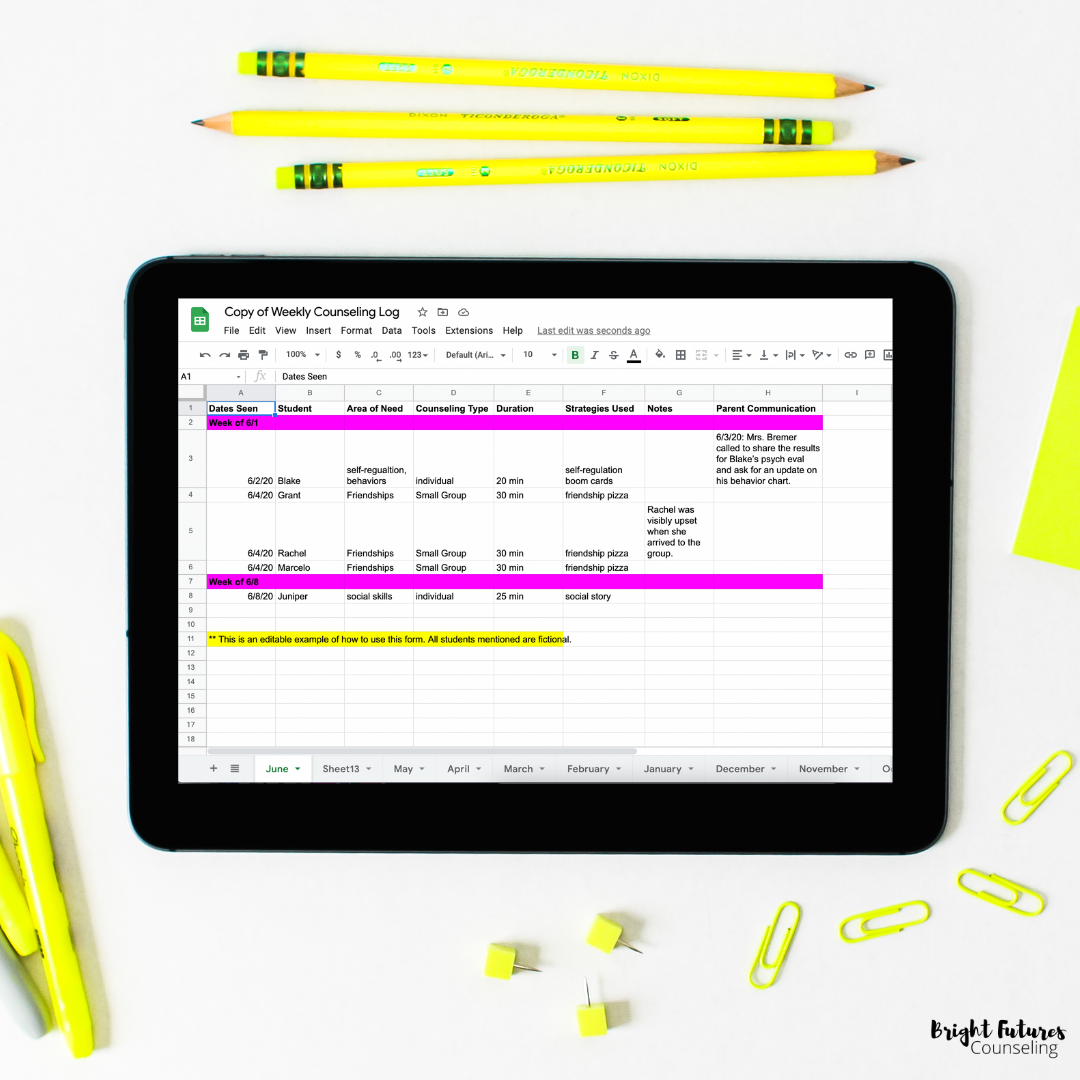How to Conduct a Mid Year Check In using a Data Wall
We often think about analyzing data at the end of the school year to reflect on program progress. I am a huge proponent of this and love showcasing my findings in an End of the Year Report, however data tracking isn't only for the end of the year. In fact, it's imperative that we are constantly reviewing our students and program's progress.
Why? So we can we constantly improve our services to best fit students' ever changing needs. The praise and approval that comes with advocating for your role? That's just icing on the cake!
What is a data wall?
A data wall is simply a bulletin board you display to showcase the impact your counseling program is having. You can share data on student progress and the services you've provided.
How to Measure Student Progress
Quantifying student progress assesses how students have been doing since they've been in counselng with you. It basically shows if they are improving or not! You can find this out by using data tracking tools like self-assessments and behavior surveys.
School Counseling Self-Assessments
A self-assessment is a quick questionnaire you give students before and after each group or set of individual sessions (usually about 6-8 weeks). This shows a student's self-percieved progress.
School Counseling Behavior Surveys
A behavior survey is a survey you can send to parents and teachers before and after services provided so they can rate how their child/student is doing. You can also send one mid-services to ensure your counseling methods are on the right track. Then use this feedback to adjust and tweak your program to best serve students' needs.
How to Measure Services Provided
Quantifying services provided (aka how many kids you see) allows you to advocate for your role and show a need for your position. This data shows who you are seeing and how you are seeing them.
You can simply add up your sessions and lessons using data you've tracked on your calendar or counseling log. Snag my counseling log template here.
Creating a data wall helps you acheive two things:
-
Advocate for your role as the school counselor.
-
Collect data allows you to modify curriculum to best fit students' needs.
Putting it all together on a data wall
Once you have the data, use it to create charts and graphs displaying your findings. (I love to use Google Forms digital forms like these because it automatically creates pie charts for you!)
Things to consider:
-
Keep it anonymous. You can share student results but be sure to maintain confidentiality by removing names.
-
You don't have to use all of the data! You want to avoid overwhelming your bulletin board or viewer so choose one or two data points to touch on instead of including everything.
-
Showcase your findings at the end of each quarter, semester, or more frequently.
-
Place your data wall bulletin board in a high traffic place so it gets the most eyes. Think of a place where parents, students, and staff will see it. This communicates the services you offer and destigmatizes counseling to students while advocating for your role to staff and parents.
Click here to get your data wall toolkit!
I would love to see your data walls in action. Be loud and proud about the amazing services you provide!
SHARE:








